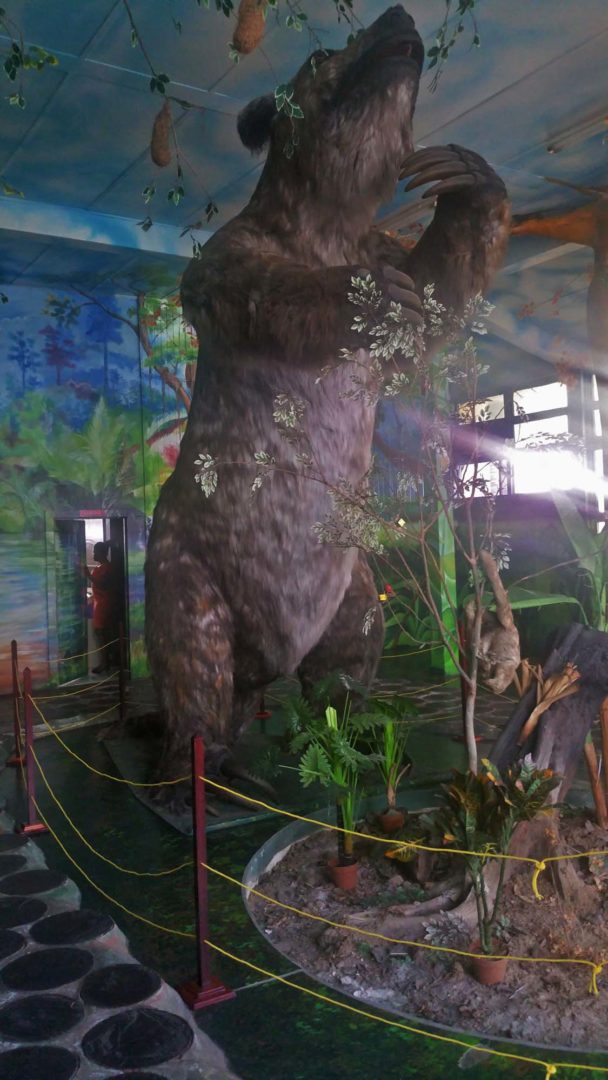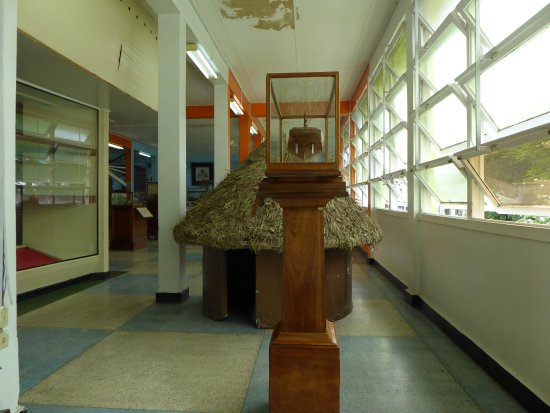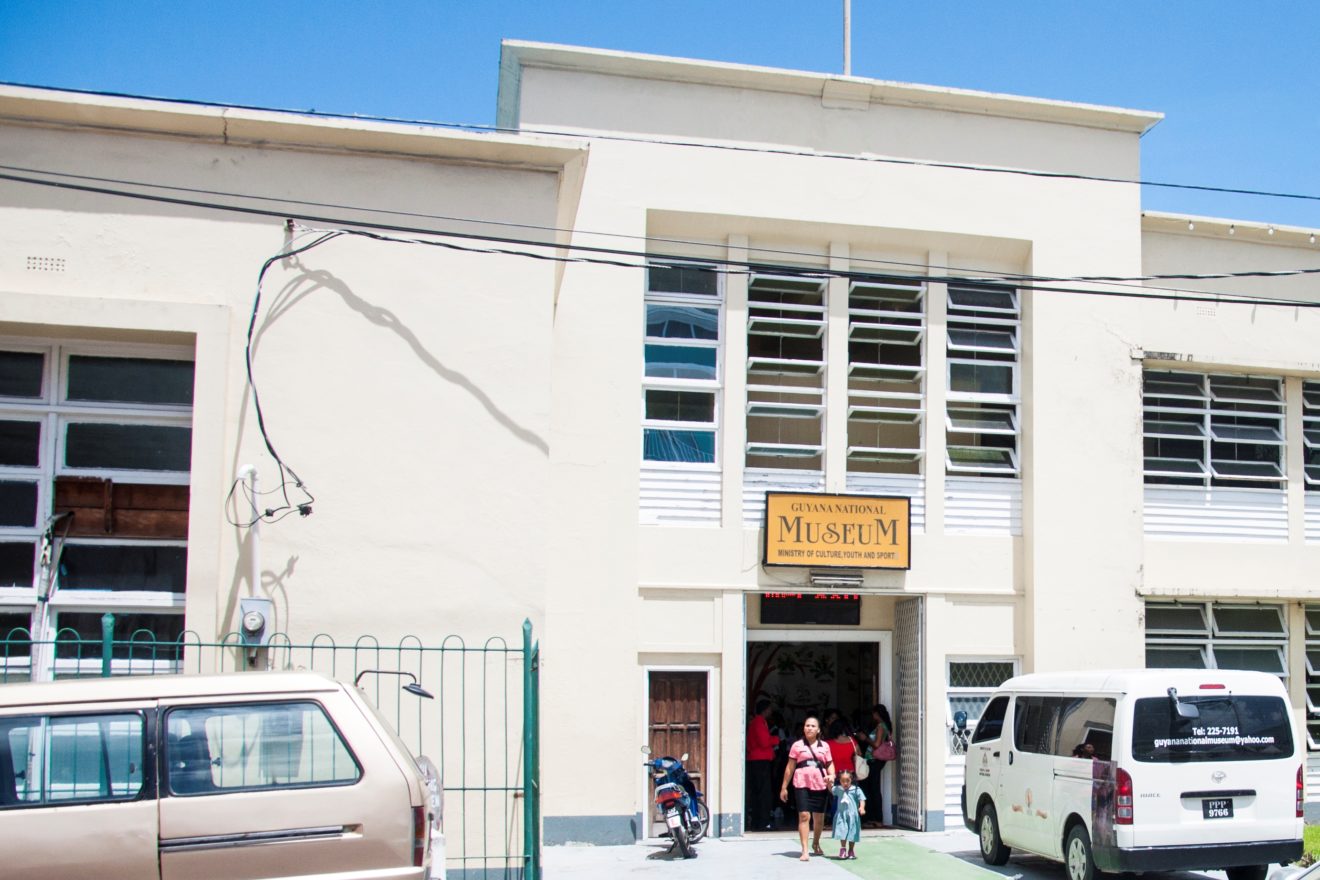The Guyana National Museum, established in the 1800s, is located on Company Path North Road in a building complex. The name company path is a relic of the nomenclature of the original Dutch inhabitants of Demerara. The Museum’s collections were housed previously in the Carneige Building. It has a collection of flora and fauna, precious stones found in our land formation, archaeological findings, and examples of Amerindian arts and crafts. This museum is the largest and house most of our general artifacts.
History

Morris Oxford (PR 1): Image Source: tripadvisor.com.ph
There are several museums in existence in Guyana, the Walter Roth Museum of Anthropology, the Dutch Heritage Museum, Castellani House-The National Art gallery, the Guyana Heritage Museum among others. Of all the museums however, the National Museum of Guyana was the first to be established. It was established by the Royal Agricultural and Commercial Society whose objective was to create a museum to store both indigenous and introduced minerals. Also, soils, timbers, fruits seeds, gums, resins and dyes. Efforts to establish the museum encouraged a small but generous donation of a collection of fifty five native woods by Sir Robert Schomburgk. At a later date they then received a gift of minerals from one of their founding members. As the collection slowly increased the colonial museum exhibits were said to be inadequately housed and hardly displayed.
In 1855 the museum staged its first local exhibition, displaying the curious public items including golf from the Cuyuni-Mazaruni. The exhibition was said to be successful except for on constraint which was space, thereby limiting spectators.
The Society continued to receive gifts until it was proposed that a Museum be constructed at company path

The giant sloth reaches from top to bottom of the Mega T Room | Source: http://guyanachronicle.com
However, the museum with all its items were destroyed when the library building went up in flames. Within a short period following the destruction of the colonial museum and the library the RACS enthusiastically organised its efforts to rebuild from the ashes upwards. These efforts led to the recognization of the British Guyana Museum Company. Progress was made until 1867 where a new board was appointed for the purpose of fulfilling the formation of museum in which various specimens illustrative of the national history might be preserved.
The erection of the new structure was costly and funds were raised through advertisements for persons to buy shares. The construction of the structure designed by Mr. Francis A Conyers was soon undertaken and by October 1867, the Chairman reported that a large portion of the frame was pulled into place. Described as the best Guyana has ever got was the grand opening of the newly erected museum in which a grand exhibition was done.
Visiting the National Museum
There is so much, and of such a wide variety, for the visitor to munch on when one visits the Guyana’s National Museum. It is one sparkling little diamond of a museum which we can all take pride in. That institution has a collection of materials which spans decades as well as variety, and it has attracted generations of Guyanese as well as visitors from over-seas over the decades.
Among the items now on display at the museum are some of the simple things which Guyanese used on a daily basis in colonial times. They include morter and pestle, pressing comb, flat iron, charcoal iron, mud fireside, clay boblette, milk can, manicole broom, sling shot, rubber ban chain, coconut grater, scooter and a host of others.
 Many of the artifacts which are on display, have been there for well over fifty years; for example, the Pork-knocker has been on display since over sixty years ago. There are miniature versions of some of the well-known Transport and Harbours Department Ferry boats, which have long gone out of service, the MV Querriman being the most popular. Also on display is the vehicle, PR1, which was used by Prime Minister Dr. Ptolemy Reid, during his tenure in high political office.
Many of the artifacts which are on display, have been there for well over fifty years; for example, the Pork-knocker has been on display since over sixty years ago. There are miniature versions of some of the well-known Transport and Harbours Department Ferry boats, which have long gone out of service, the MV Querriman being the most popular. Also on display is the vehicle, PR1, which was used by Prime Minister Dr. Ptolemy Reid, during his tenure in high political office.
During the Jubilee season, the National Museum mounted a special exhibition and visitors have more than doubled during the months of April and May 2016. During that period recorded was that there were over fifteen hundred visitors each week, up from about six hundred, over the past two months. This big increase seems in no way to be getting back to the average any time soon.
Every nation which has self-respect, respects its past – the good, the bad and the ugly – and preserves them so that current generations will have a clearer knowledge of what their ancestors did, and how they did it.
The Guyana National Museum by far has been one of the ancient buildings still in existence. Most times, during school tours, teachers carry their students to experience a visit to the museum.
Visit the National Museum
- Address: North Road, Company Path, Georgetown (opposite the Hibiscus Plaza and the Guyana Post Office)
- Telephone: (592) 225 7191
- Opening Hours: From Monday to Friday, 9:00hrs to 16:00hrs, on Saturday from 9:00hrs- 14:00hrs.
- Admission: Free, but donations are accepted.
Reference
- http://www.guyanacityguide.com/place/guyana-national-museum/
- https://news.google.com/newspapers?nid=2492&dat=20070823&id=Nc81AAAAIBAJ&sjid=fiYMAAAAIBAJ&pg=1866,6056231&hl=en
- http://guyanachronicle.com/2016/06/15/a-visit-to-the-national-museum
Discover more from Things Guyana
Subscribe to get the latest posts sent to your email.







